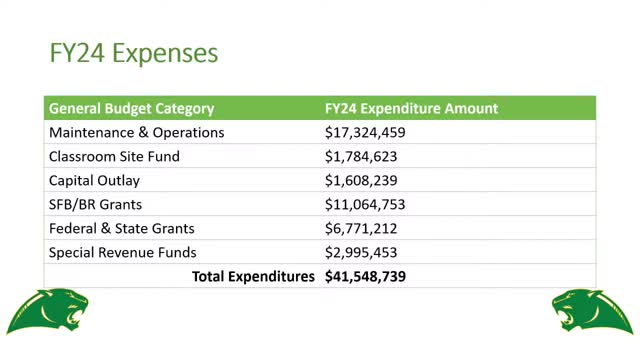School district faces funding challenges as COVID dollars expire
October 03, 2024 | Show Low Unified District (4393), School Districts, Arizona
This article was created by AI summarizing key points discussed. AI makes mistakes, so for full details and context, please refer to the video of the full meeting. Please report any errors so we can fix them. Report an error »

In a recent government meeting, officials discussed the complexities surrounding the allocation and management of school funding, particularly in light of recent federal and state grants. A significant portion of the discussion focused on the limitations imposed by grant funding, which cannot be redirected to cover operational costs such as salaries or maintenance for aging infrastructure. Instead, funds are strictly earmarked for specific projects, often requiring evidence of system failures before eligibility for grants can be established.
The meeting highlighted that the school district had spent nearly $7 million on federal and state grants, with over half of that amount derived from COVID-related ESSER funds. Officials confirmed that all COVID-related dollars had been fully utilized, with no funds returned to the state or federal government. However, they cautioned that the absence of these funds in fiscal year 2025 would lead to a significant reduction in available federal and state grant money.
The discussion also touched on the district's budget management strategies, particularly the importance of maintaining reserves to address unforeseen expenses, such as major repairs or changes in minimum wage. Officials noted that the district had intentionally built up a budget balance carry forward to mitigate the impact of losing ESSER funds, ensuring financial stability moving forward.
Visual presentations during the meeting illustrated the breakdown of expenditures, revealing that a substantial portion of the budget was allocated to facility improvements rather than direct instructional costs. This shift was attributed to the availability of state funding for building improvements, which affected the overall distribution of the budget.
As the meeting concluded, officials emphasized the need for careful financial planning and the importance of reserves to navigate potential budget cuts and unexpected expenses in the future.
The meeting highlighted that the school district had spent nearly $7 million on federal and state grants, with over half of that amount derived from COVID-related ESSER funds. Officials confirmed that all COVID-related dollars had been fully utilized, with no funds returned to the state or federal government. However, they cautioned that the absence of these funds in fiscal year 2025 would lead to a significant reduction in available federal and state grant money.
The discussion also touched on the district's budget management strategies, particularly the importance of maintaining reserves to address unforeseen expenses, such as major repairs or changes in minimum wage. Officials noted that the district had intentionally built up a budget balance carry forward to mitigate the impact of losing ESSER funds, ensuring financial stability moving forward.
Visual presentations during the meeting illustrated the breakdown of expenditures, revealing that a substantial portion of the budget was allocated to facility improvements rather than direct instructional costs. This shift was attributed to the availability of state funding for building improvements, which affected the overall distribution of the budget.
As the meeting concluded, officials emphasized the need for careful financial planning and the importance of reserves to navigate potential budget cuts and unexpected expenses in the future.
View full meeting
This article is based on a recent meeting—watch the full video and explore the complete transcript for deeper insights into the discussion.
View full meeting
